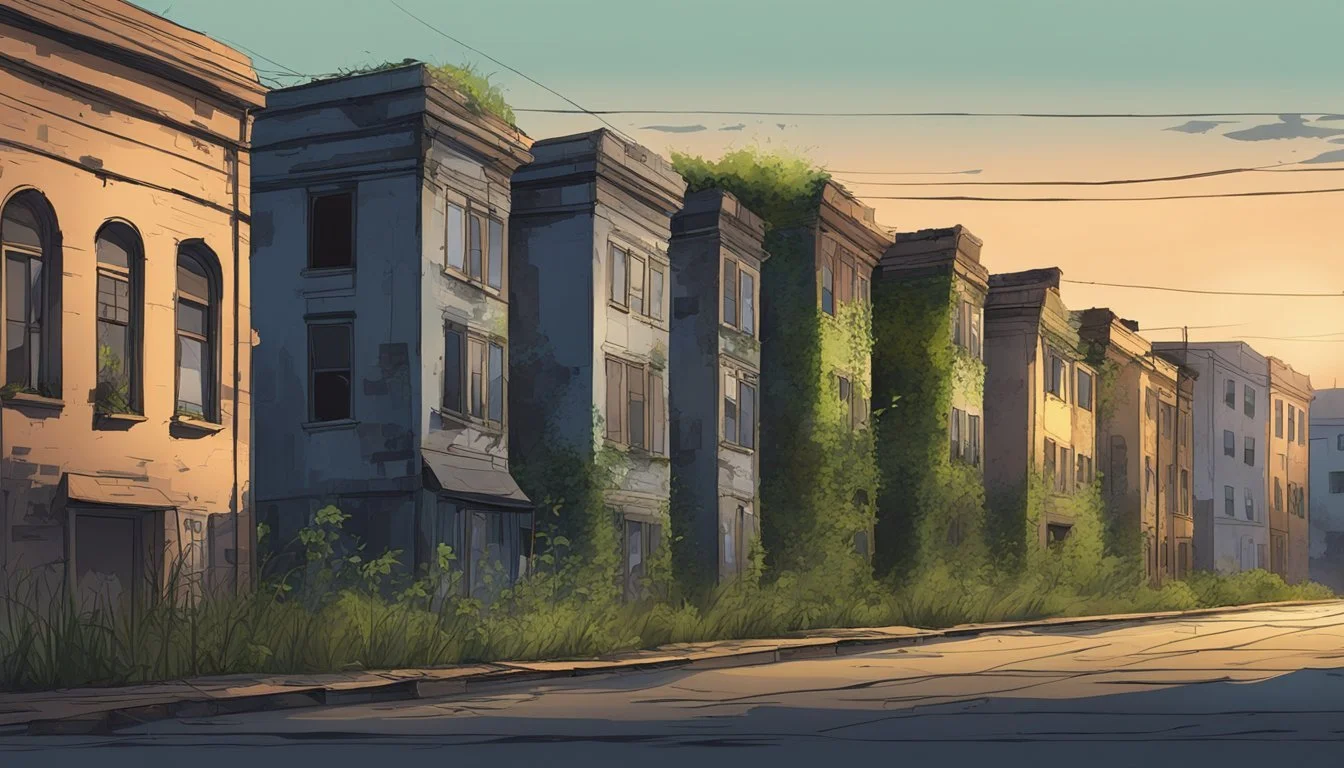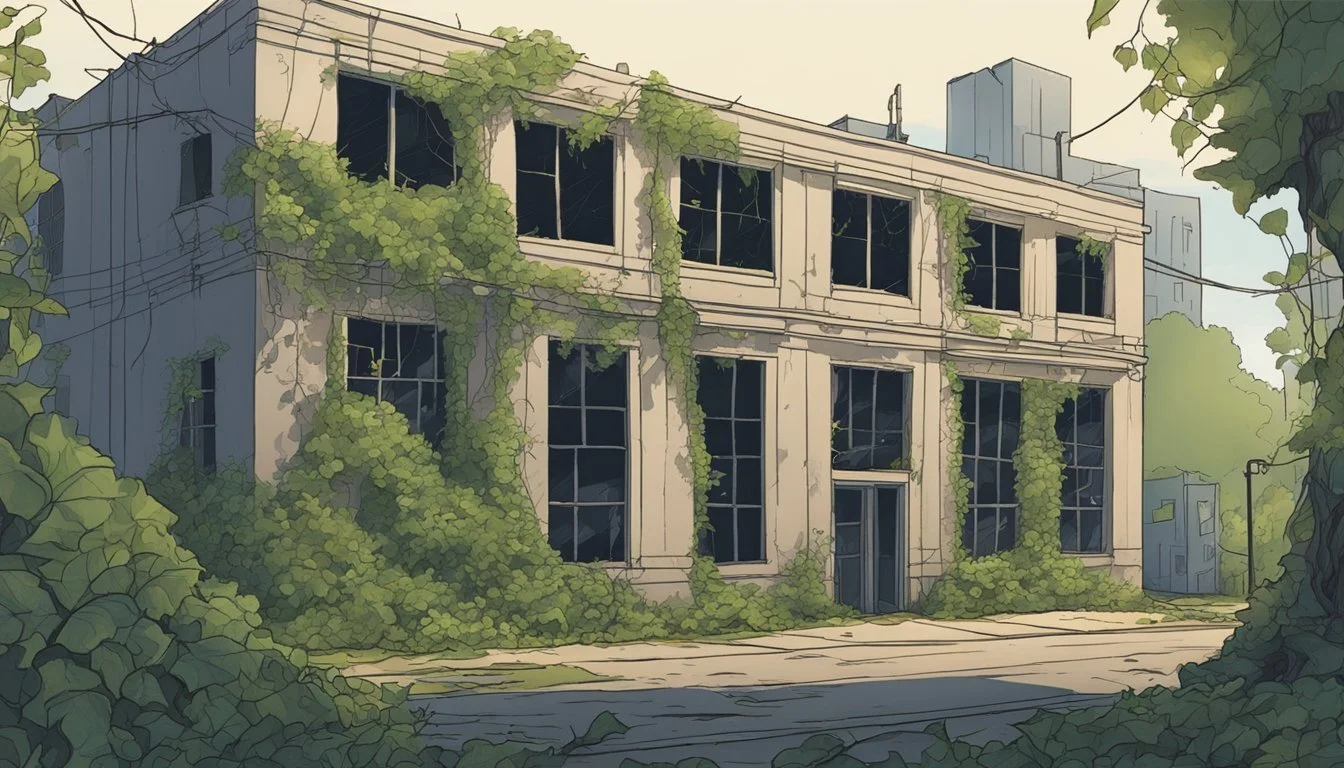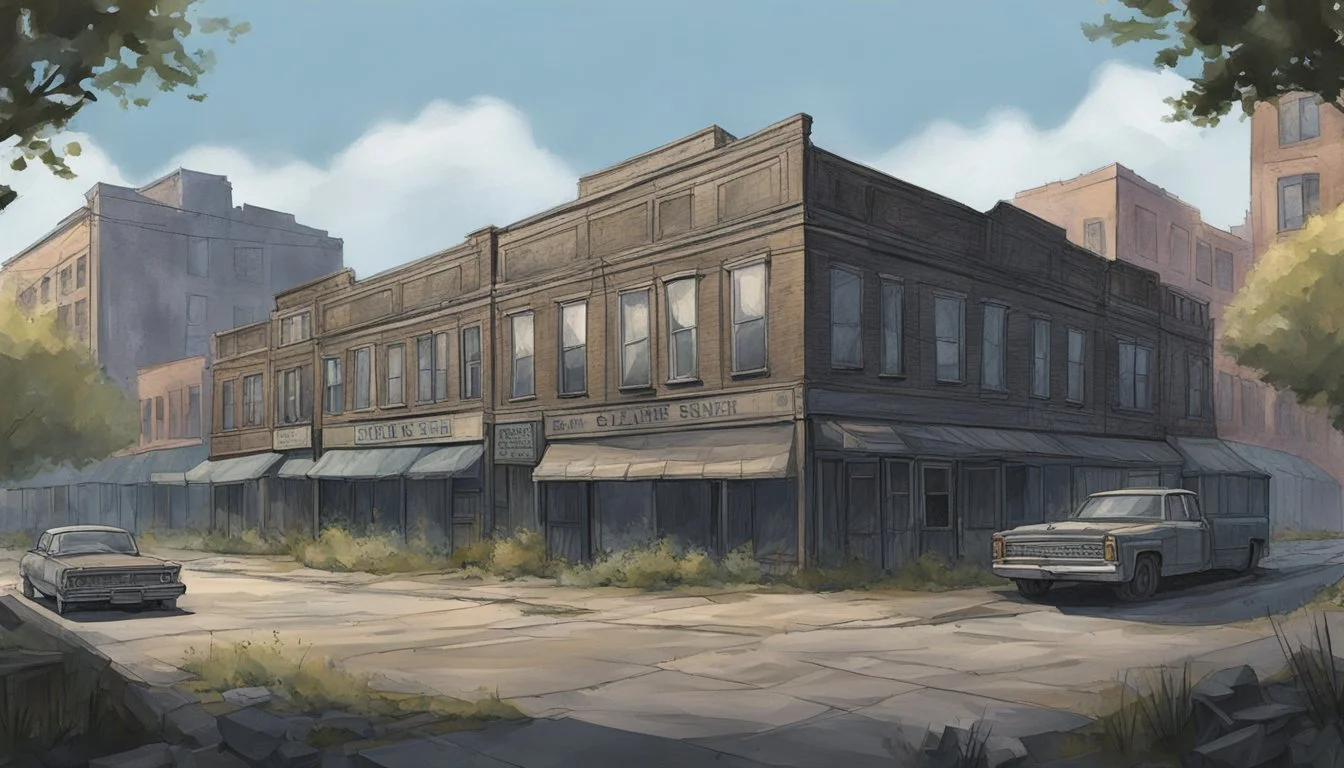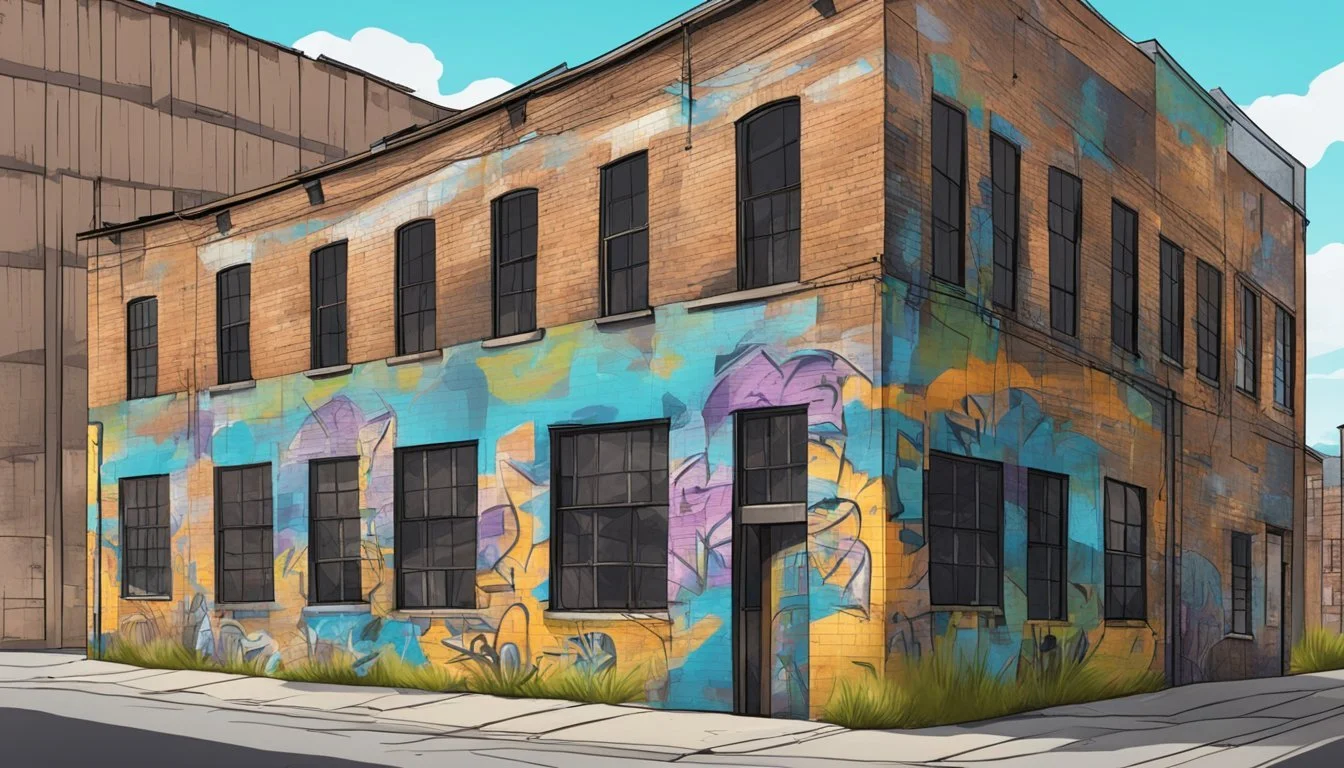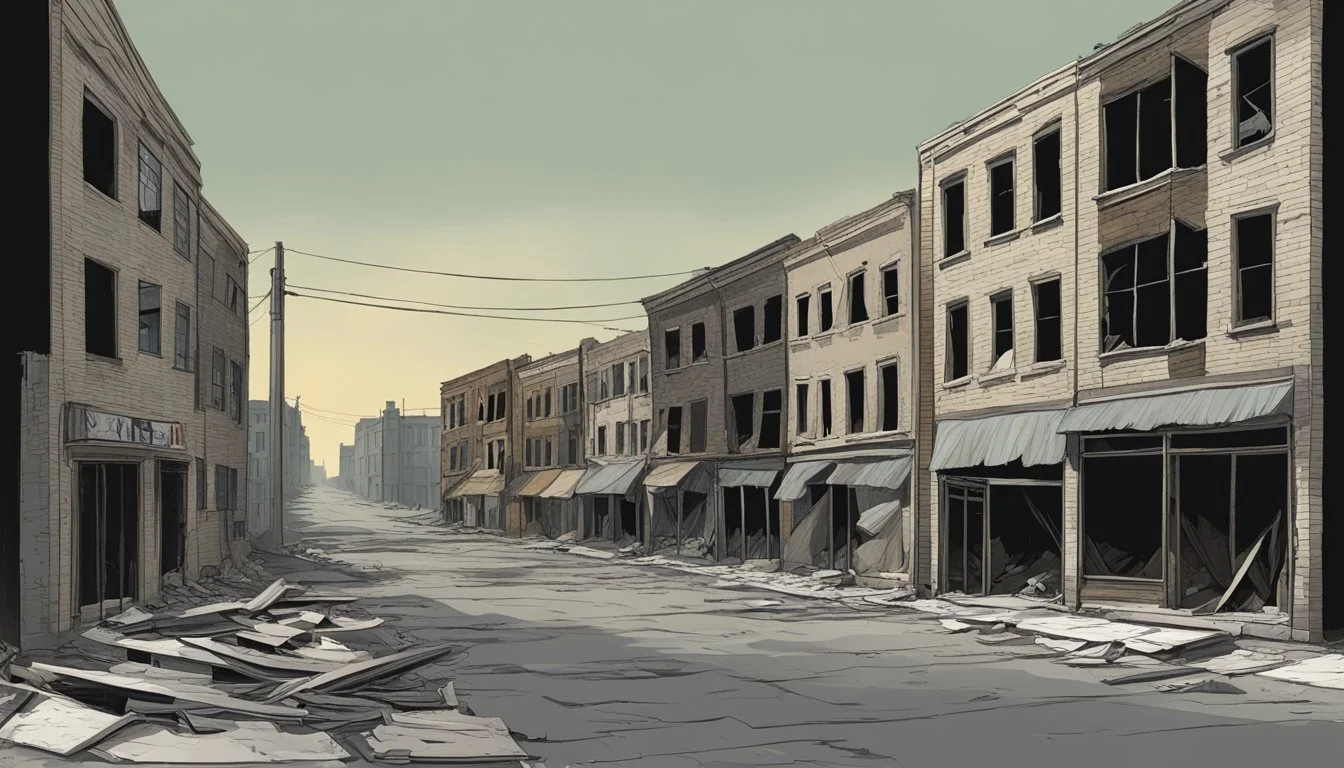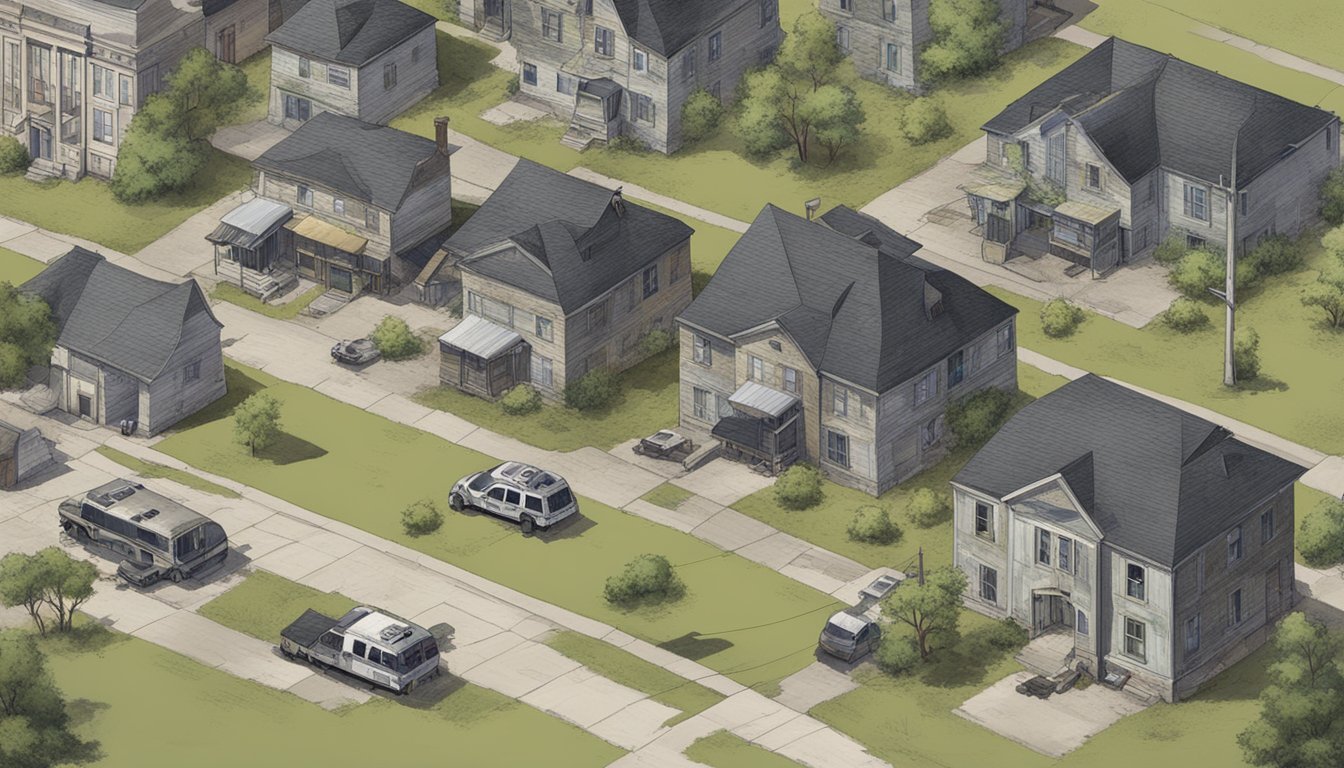Andre Crawford: 7 Abandoned Buildings Where the South Side Slayer Struck
Mapping Chicago's Dark History
Andre Crawford terrorized Chicago's South Side in the 1990s, leaving a trail of brutality in his wake. His crimes shocked the community and baffled law enforcement as he targeted vulnerable women in abandoned buildings across the area.
Crawford's string of murders spanned from 1993 to 1999, claiming the lives of 11 women before he was finally apprehended. Many of his victims were struggling with addiction or engaged in sex work, making them easy targets for the predator lurking in derelict structures. The case shed light on the dangers faced by marginalized individuals in neglected urban spaces.
1) The Red Mustang Ranch
The Red Mustang Ranch was one of the abandoned buildings where Andre Crawford committed his heinous crimes. Located in Chicago's South Side, this derelict structure became a notorious site in the serial killer's reign of terror.
Crawford targeted vulnerable women in the area, often luring them to abandoned properties like the Red Mustang Ranch. The building's isolated location and dilapidated condition made it an ideal spot for his nefarious activities.
Law enforcement discovered evidence of Crawford's presence at the Red Mustang Ranch during their investigation. DNA samples and other forensic clues helped link him to crimes committed at this location.
The Red Mustang Ranch stood as a grim reminder of the dangers lurking in neglected urban areas. Its association with Crawford's crimes brought attention to the need for better security and community revitalization efforts in the neighborhood.
After Crawford's arrest, the Red Mustang Ranch became a focal point for local residents seeking closure. Many called for its demolition to erase the painful memories associated with the building.
2) Haunted L.A. Rehearsal Studio
In the heart of Los Angeles, an abandoned rehearsal studio stands as a chilling reminder of Andre Crawford's reign of terror. This dilapidated building, once filled with the sounds of aspiring musicians, now echoes with an eerie silence.
The studio's history took a dark turn when Crawford used it as a hunting ground. Its isolated location and soundproof walls made it an ideal spot for his heinous acts. The building's maze-like layout of practice rooms and recording booths provided ample hiding places.
Local urban explorers have reported strange occurrences within the studio's walls. Unexplained cold spots, whispers, and the faint sound of instruments playing have been documented. Some claim to have seen shadowy figures darting between rooms.
The building's exterior bears the scars of neglect, with graffiti-covered walls and boarded-up windows. Inside, instruments and equipment lay scattered, frozen in time since the studio's abrupt closure. The atmosphere is thick with an unsettling energy that lingers long after visitors leave.
Despite efforts to demolish or repurpose the property, legal complications have left it in limbo. The haunted rehearsal studio remains a somber testament to the victims of the South Side Slayer.
3) Old South Central Bank
The Old South Central Bank building stood as a decaying sentinel in Chicago's South Side. Its abandoned shell bore witness to Andre Crawford's heinous acts in the late 1990s.
Once a bustling financial hub, the bank fell into disrepair as the neighborhood declined. Boarded windows and crumbling brickwork marked its descent into neglect.
Crawford targeted vulnerable women in the area surrounding the defunct bank. The building's shadowy alcoves and overgrown lot provided cover for his predatory activities.
Local residents reported eerie sounds emanating from the abandoned structure at night. Some speculated it was linked to Crawford's crimes, though this was never confirmed.
The bank's vault, long since emptied, became an impromptu shelter for homeless individuals. This drew Crawford's attention as he sought isolated locations to carry out his attacks.
Police eventually searched the premises during their investigation into the South Side Slayer. They found evidence linking Crawford to at least one of his victims near the old bank.
Today, the Old South Central Bank remains a somber reminder of a dark chapter in Chicago's history. Its dilapidated facade stands as a stark contrast to the vibrant community working to reclaim their neighborhood.
4) Deserted Flower Street Complex
The Deserted Flower Street Complex became one of Andre Crawford's hunting grounds in the late 1990s. This abandoned housing development on Chicago's South Side provided ample cover for criminal activity.
The complex consisted of several dilapidated apartment buildings surrounded by overgrown lots. Years of neglect had turned the area into a maze of crumbling structures and concealed spaces.
Crawford took advantage of the complex's isolated location and lack of surveillance. He lured vulnerable victims to the deserted buildings under various pretenses.
The labyrinthine layout of the abandoned apartments allowed Crawford to evade detection. He used vacant units to commit his crimes away from prying eyes.
Local residents avoided the complex due to its dangerous reputation. This isolation further enabled Crawford to operate undetected for an extended period.
Law enforcement eventually uncovered evidence linking multiple attacks to the Deserted Flower Street Complex. The site became a key focus of the investigation into the South Side Slayer's crimes.
5) Creepy Crenshaw Storefront
Andre Crawford utilized abandoned buildings throughout Chicago's South Side for his heinous crimes. One such location was a vacant storefront on Crenshaw Boulevard.
This dilapidated structure stood as a stark reminder of economic decline in the neighborhood. Its boarded-up windows and crumbling facade provided Crawford with a secluded spot to target vulnerable victims.
The once-bustling commercial space had fallen into disrepair, becoming an eerie shell of its former self. Overgrown weeds and litter surrounded the building, further contributing to its ominous appearance.
Crawford likely chose this location for its proximity to areas frequented by potential victims. The abandoned storefront offered easy access and minimal chance of discovery.
Inside, the dark and decaying interior created an ideal environment for Crawford's predatory actions. Debris and remnants of the building's past use littered the floors, adding to the unsettling atmosphere.
The Crenshaw storefront serves as a chilling example of how neglected urban spaces can become hunting grounds for dangerous individuals. Its association with Crawford's crimes left an enduring mark on the community.
6) Boarded-up Wilmington Warehouse
Andre Crawford's crimes extended beyond Chicago's South Side to other abandoned structures. One such location was a boarded-up warehouse in Wilmington, Delaware.
The dilapidated building stood as a silent witness to Crawford's heinous acts. Its crumbling walls and broken windows provided the perfect cover for his predatory behavior.
Local authorities discovered evidence linking Crawford to this site during their investigation. The warehouse's isolated location made it an ideal spot for Crawford to target vulnerable victims.
Forensic teams combed through the decaying structure, uncovering crucial evidence. Their findings helped piece together Crawford's movements and strengthen the case against him.
The Wilmington warehouse serves as a chilling reminder of Crawford's far-reaching impact. It demonstrates how abandoned buildings can become dangerous spaces when left unchecked.
Community efforts to secure and repurpose such structures gained momentum following these revelations. Local officials implemented stricter monitoring of vacant properties to prevent similar incidents in the future.
7) Abandoned Slauson Avenue House
Andre Crawford targeted an abandoned house on Slauson Avenue as one of his crime scenes. The dilapidated structure provided a secluded location for his brutal acts.
Neighbors had long complained about the vacant property, which had fallen into severe disrepair. Broken windows and an overgrown yard made it an eyesore in the community.
Crawford likely gained entry through an unsecured door or window. Inside, he found a dark and isolated space to carry out his heinous crimes.
The house's deteriorating condition meant few people ventured near it, allowing Crawford to operate undetected. Its remote location on Slauson Avenue also limited potential witnesses.
After the murders came to light, investigators carefully combed through the abandoned residence. They collected evidence that helped build the case against Crawford.
The Slauson Avenue house has since been demolished. Today, the empty lot serves as a somber reminder of the tragedy that unfolded within its walls.
Background of Andre Crawford
Andre Crawford, born on March 20, 1962, became one of Chicago's most notorious serial killers. His crimes shocked the city and left a trail of devastation in their wake.
Early Life and Upbringing
Crawford grew up in Chicago's South Side. Details about his childhood are limited, but reports suggest he experienced a troubled upbringing. He struggled with substance abuse from an early age, which likely contributed to his later criminal behavior.
As an adult, Crawford led a transient lifestyle. He occasionally worked for the Chicago Sun-Times delivery operations, moving between abandoned buildings in the city's impoverished neighborhoods.
Criminal History
Crawford's criminal activities escalated dramatically in the 1990s. Between 1993 and 1999, he committed a series of horrific crimes that terrorized Chicago's South Side.
He targeted vulnerable women, many of whom were addicted to drugs or worked as sex workers. Crawford lured his victims to abandoned buildings, where he raped and murdered them. In total, he was convicted of 11 murders and 9 rapes.
His modus operandi included sexual assault, strangulation, and necrophilia. Crawford's crimes went undetected for years, earning him the moniker "South Side Slayer."
In 2009, a jury found Crawford guilty on all counts. He received a sentence of life imprisonment without the possibility of parole. Crawford died in prison on March 18, 2017, just two days before his 55th birthday.
Impact on the South Side Community
Andre Crawford's crimes deeply affected Chicago's South Side neighborhoods. The murders and assaults shook residents, eroding their sense of safety and trust.
Community Response
Local activists organized neighborhood watch groups and safety workshops in response to the killings. Churches and community centers held vigils for the victims. Some residents pushed for increased police patrols in high-crime areas.
Grassroots efforts emerged to support vulnerable women and address drug addiction. Volunteers distributed personal alarms and self-defense tools. Community leaders advocated for better street lighting and security cameras in abandoned buildings.
The case highlighted longstanding issues of poverty, neglect, and crime in the South Side. It sparked difficult conversations about protecting marginalized community members.
Long-term Psychological Effects
Crawford's crimes left lasting trauma on South Side residents. Many reported increased anxiety, especially when walking alone at night. Parents became more protective of their children.
Some locals developed a heightened distrust of strangers, particularly unfamiliar men. The murders reinforced negative perceptions of certain neighborhoods as dangerous.
For years after the killings, abandoned buildings evoked fear and unease. Residents viewed them as potential crime scenes. This contributed to further property neglect and declining home values in some areas.
The community's collective grief and anger lingered long after Crawford's arrest. Support groups formed to help residents process their emotions and rebuild their sense of security.
Law Enforcement Involvement
Chicago police faced significant challenges in tracking down Andre Crawford. Their investigation spanned several years and involved extensive evidence gathering and analysis to finally apprehend the serial killer.
Investigation Tactics
Detectives utilized DNA evidence to link multiple crime scenes. They collected samples from victims' bodies and abandoned buildings where attacks occurred. Forensic teams meticulously processed each location for fingerprints, fibers, and other trace evidence.
Police conducted extensive interviews with witnesses and surviving victims. These accounts helped create a suspect profile and timeline of attacks. Undercover officers increased patrols in high-risk areas of Chicago's South Side.
A task force was formed to coordinate efforts across precincts. They compiled a database of similar crimes to identify patterns. Detectives also worked with the FBI to develop a psychological profile of the killer.
Challenges Faced
The transient nature of many victims complicated identification efforts. Some bodies were discovered months after death, degrading valuable evidence. Abandoned buildings provided few witnesses or surveillance footage.
Crawford's attacks spanned multiple police jurisdictions, initially hindering information sharing. Limited resources and manpower stretched investigators thin across numerous cases.
Public distrust of law enforcement in some communities made gathering tips difficult. The killer's ability to blend into the neighborhood allowed him to evade capture for years.
Overcoming these obstacles required persistence and innovative tactics. Police eventually arrested Crawford in 2000 after matching his DNA to multiple crime scenes.
Media Coverage and Public Perception
Andre Crawford's crimes shocked Chicago and drew significant attention from local and national media outlets. News reports and true crime documentaries explored the serial killer's actions and their impact on the South Side community.
News Reports
Chicago newspapers extensively covered Crawford's crimes and trial. The Chicago Tribune and Chicago Sun-Times published detailed articles about the murders, police investigation, and court proceedings. Television news stations aired regular updates as the case unfolded.
Reporters interviewed victims' families, highlighting the personal toll of Crawford's actions. Coverage often focused on the abandoned buildings where bodies were found, drawing attention to urban decay in the neighborhood.
Some critics argued media portrayals sensationalized the violence or reinforced negative stereotypes about the area. Others praised journalists for bringing attention to overlooked victims and community issues.
Documentaries and Books
Several true crime documentaries examined the Andre Crawford case. "South Side Slayer: Eyewitness Accounts" featured interviews with survivors and law enforcement. The film provided a chilling look at Crawford's crimes through firsthand perspectives.
"The New Detectives" series on Discovery Channel included an episode on the investigation. It highlighted forensic techniques used to catch Crawford.
True crime authors penned books detailing the murders and trial. These works often explored Crawford's background and possible motives. Some books placed the crimes in broader context of Chicago's history and social issues.
Documentaries and books brought renewed attention to the case years after the trial. They sparked discussions about serial killers, vulnerable populations, and urban crime.

